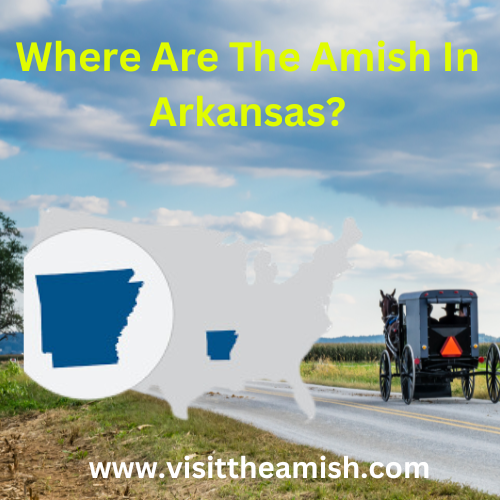Arkansas Amish: A Journey of Community and Adaptation
Arkansas, often referred to as the “Natural State,” conjures images of pristine landscapes and rural charm—a setting that might seem ripe for the establishment of Amish communities. However, the reality reveals a different story. Arkansas has witnessed only sporadic attempts at Amish settlement, with a handful of communities emerging over time. Despite the state’s potential allure, factors such as climate and proximity to other Amish communities have influenced the limited Amish presence in Arkansas.
Arkansas: A Unique Amish Landscape
While Arkansas’s northern neighbor, Missouri, boasts a substantial Amish population, Arkansas itself is home to only a handful of Amish communities. The reasons behind this contrast are multifaceted, touching on climate considerations, regional dynamics, and the history of Amish settlement patterns in the United States.
Two Enclaves: The Heart of Arkansas’s Amish Presence
As of 2021, Arkansas is host to two Amish settlements, each representing a distinct story of adaptation and growth. The Fulton County settlement, nestled near the Missouri border, was founded in 2008. Originating from the Tennessee Amish settlement at McKenzie, settlers here have embraced farming and agricultural pursuits, seeking a connection to the land while tending to their traditional way of life. Over time, the community has grown from its humble beginnings, emerging as a vibrant single church district.
In Benton County, another Amish settlement took root in 2013. Spanning two church districts, this community reflects the resilience of the Amish spirit in the face of change. These Arkansas Amish pioneers exemplify the ability to maintain core values while adapting to new surroundings.
Historical Glances: Early Amish Endeavors
Arkansas’s foray into hosting Amish communities dates back to the 1920s. The state welcomed pioneers from the Centreville Amish community in Michigan, with settlers arriving in Arkansas County in 1927. The Stuttgart community, as it came to be known, faced challenges stemming from the region’s warm climate and heavy moisture. Rice irrigation and harvesting complexities, along with financial hardships brought on by the Great Depression, led to setbacks for the fledgling community. By 1938, the Stuttgart community had disbanded, emblematic of the challenges early settlers confronted in their pursuit of an Amish haven.
Lessons from the Past: Resilience Amid Change
Amid these historical challenges, a single family from the Stuttgart community ventured to Craighead County near Nettleton in 1932. Their presence was joined by two families from Mississippi Amish settlements later that year. Unfortunately, this community’s trajectory was brief, with all families departing by 1934. Such instances highlight the delicate balance between tradition and adaptation, underscoring the resilience of the Amish spirit.
A Glimpse of Modern Realities: Rise and Fall
More recent efforts to establish Amish communities in Arkansas demonstrate the complexities of maintaining traditional values while facing modern realities. The Vilonia community in Faulkner County, founded by Amish from Iowa in 1959, experienced growth until 1965, when it came to an end due to a combination of factors, including poor crop yields and limited marriage prospects.
The Rector community in Clay County is another testament to the challenges of community growth. Established in 2009, it shuttered just five years later. This community, comprised of Amish from Indiana, Tennessee, and Illinois, aimed to cultivate a vibrant settlement, complete with farms, small businesses, and a school. However, unfulfilled plans for further expansion and limited opportunities for marriage among their children led to the community’s eventual decline.
Amish Legacy: An Ongoing Narrative
The story of Arkansas’s Amish communities is one of adaptation, resilience, and the pursuit of a way of life that bridges tradition and modernity. The ebb and flow of settlement attempts underscore the challenges of maintaining a distinct identity while navigating changing landscapes.
As Arkansas continues to evolve, the Amish legacy lives on, a reminder that the quest to balance timeless values with the demands of a dynamic world is a journey that resonates across generations. The Arkansas Amish narrative serves as a testament to the strength of community bonds and the enduring spirit that drives individuals to uphold their beliefs, no matter the challenges that lie ahead.

